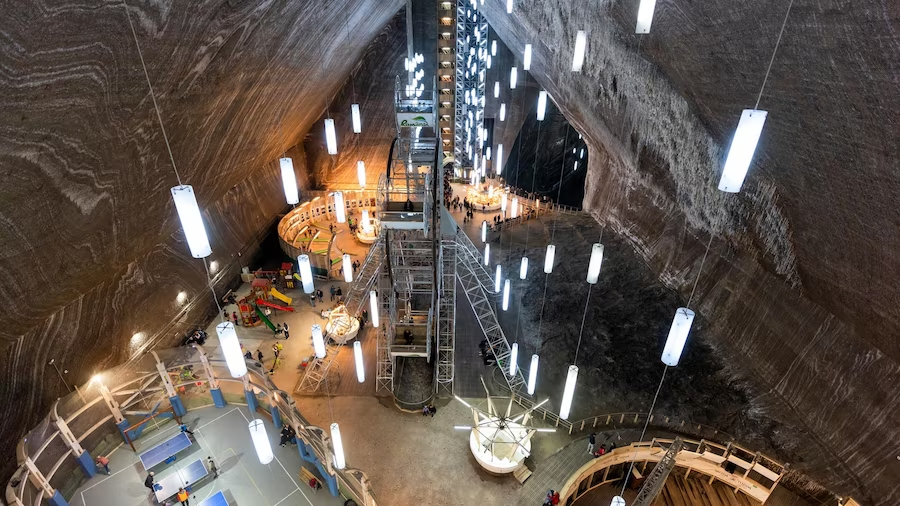Safety is paramount in any industrial setting, and nowhere is this more critical than in underground mining operations. The hazardous nature of mining environments necessitates meticulous planning and innovative solutions to ensure the well-being of workers. One essential aspect of enhancing workplace security is the integration of handrails in mine design. These unassuming structures play a significant role in preventing accidents and providing stability for miners. In this blog, we will explore the importance of underground mining handrails and their positive impact on safety and efficiency.
Enhancing Worker Safety with Underground Mining Handrails
Mining sites can be treacherous, with uneven terrain, steep slopes, and confined spaces posing constant risks to miners. In such environments, handrails serve as vital lifelines, offering support and stability while traversing through tunnels and accessing different work areas. By integrating handrails into the mine design, companies can significantly reduce the occurrence of slips, trips, and falls, which are common causes of injuries in mining operations.
Preventing Accidents: Underground mining handrails serve as a vital physical barrier, acting as a safeguard against accidental slips and falls off edges or into open shafts. By offering a secure grip and maintaining balance, handrails instill confidence in miners while traversing narrow pathways or staircases, significantly reducing the risk of accidents. These handrails play a crucial role in enhancing overall safety within mining environments, ensuring workers can carry out their tasks with a heightened sense of security and focus.
Navigating Challenging Terrain: Mining environments often involve challenging and uneven terrain. Handrails strategically positioned along walkways and staircases provide continuous support, enabling miners to navigate safely through these areas. This added stability is especially crucial in locations with poor lighting conditions or areas that are frequently exposed to water or debris.
Improving Emergency Evacuations: In the event of an emergency, such as a collapse or a fire, quick and efficient evacuations are critical. Underground mining handrails facilitate rapid movement, allowing workers to find safe exits without hindrance. These handrails can be strategically placed near emergency exits and escape routes, streamlining the evacuation process and potentially saving lives.
Supporting Equipment Operators: Underground mining handrails are not limited to pedestrian pathways; they can also be integrated into the design of equipment platforms and maintenance areas. Operators can use handrails to stabilize themselves while boarding or disembarking machinery, enhancing safety during these high-risk tasks.
Complying with Safety Standards: Most mining regulations and safety standards mandate the implementation of safety features such as handrails. By integrating handrails into their mine design, companies demonstrate their commitment to adhering to industry best practices and ensure compliance with safety guidelines.
Promoting a Safety Culture: Incorporating handrails in mine design not only protects workers physically but also fosters a culture of safety within the organization. When employees see that their well-being is a top priority for their employers, they are more likely to adopt safety-conscious behaviors and look out for one another in hazardous conditions.
Improving Efficiency with Ergonomic Handrail Design
Beyond the obvious safety benefits, underground mining handrails can also contribute to improved efficiency in mining operations. By incorporating ergonomic design principles, handrails can enhance workflow and productivity, positively impacting the overall mine design.
Customized for Specific Tasks: Ergonomic handrail design takes into account the specific tasks performed by workers in different areas of the mine. Handrails can be customized in height and shape to accommodate various needs, whether it’s assisting miners climbing ladders or providing support during equipment maintenance.
Optimizing Movement: Strategically positioned handrails in the mine facilitate a more efficient movement of workers, minimizing unnecessary steps and delays when accessing various work zones. By reducing travel time and simplifying navigation, these well-placed handrails contribute to smoother mining operations, leading to increased productivity. The seamless movement enabled by ergonomic handrails allows miners to focus on their tasks, promoting a more streamlined and effective workflow.
Reducing Fatigue and Strain: Underground mining can be physically demanding, and miners often work long hours in challenging conditions. Ergonomic handrails can alleviate strain and fatigue, allowing workers to conserve energy and maintain their focus on their tasks.
Enabling One-Handed Operation: In certain scenarios, miners may need to carry equipment or tools while navigating through the mine. Ergonomic handrails that allow for one-handed operation offer convenience and flexibility in such situations, further improving workflow efficiency.
Conclusion
In conclusion, integrating handrails into mine design is an indispensable aspect of optimizing workplace security in underground mining operations. These unassuming structures play a vital role in preventing accidents, providing stability, and promoting a safety-conscious culture among workers. Additionally, by adopting ergonomic handrail design principles, mining companies can further enhance efficiency and productivity while safeguarding the well-being of their valuable workforce. Investing in underground mining handrails is a proactive step towards creating a safer, more efficient, and ultimately more successful mining operation.






